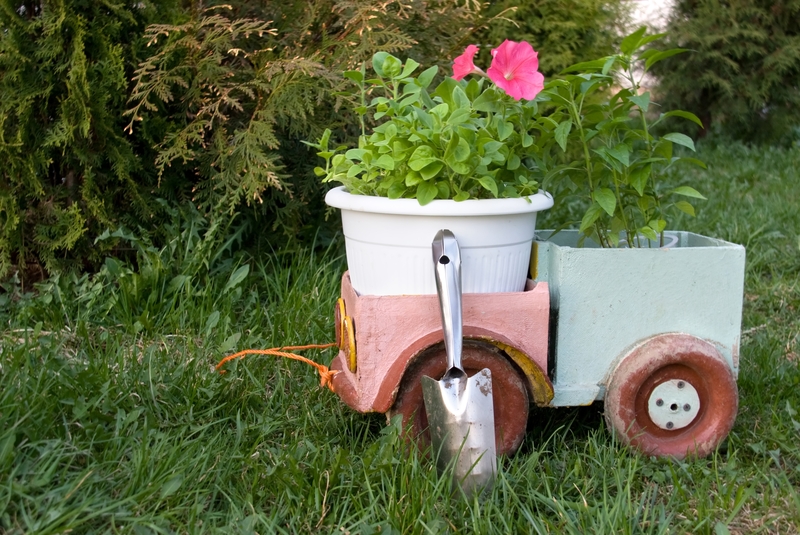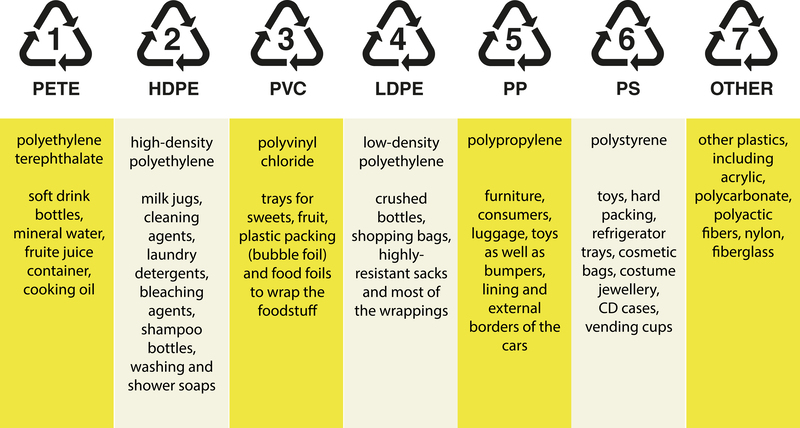Best Practices for Disposing of PPE Waste Responsibly
The COVID-19 pandemic has dramatically increased global awareness around the use of personal protective equipment (PPE). With billions of face masks, gloves, gowns, and other protective materials used every month, the need for responsible disposal of PPE waste has become an urgent environmental and public health concern. Improper disposal can lead to the spread of infections, pollute our ecosystems, and harm wildlife. In this comprehensive guide, we'll delve into the best practices for PPE waste management to help businesses, healthcare institutions, and individuals dispose of PPE sustainably and safely.
Understanding PPE and Its Environmental Impact
Personal protective equipment includes items such as masks, gloves, face shields, gowns, and shoe covers that are designed to protect the wearer from infections and hazardous substances. Most single-use PPE is made from synthetic polymers like polypropylene, which are non-biodegradable and pose significant environmental hazards when not properly discarded.
The improper disposal of PPE can result in:
- Blockage of waterways and drainage systems
- Wildlife entanglement and ingestion issues
- Microplastic pollution in soil and oceans
- Spread of potentially infectious materials
*With the vast scale of PPE usage, it is essential to adopt proper waste disposal strategies to mitigate environmental damage and health risks.*

Types of PPE Waste
PPE waste can be categorized into several types based on usage:
- Medical PPE Waste: Used in hospitals, clinics, and healthcare settings, often contaminated with bodily fluids and pathogens.
- Non-medical PPE Waste: Used by the general public or in non-healthcare settings, and often less hazardous.
- Reusable PPE: Items designed to be sterilized and reused, such as cloth masks and certain gowns.
- Single-use PPE: Disposable masks, gloves, and gowns that cannot be safely reused or recycled in most cases.
Key Principles of PPE Waste Management
Effective PPE waste disposal relies on several fundamental principles:
- Separation: Properly withholding PPE from regular waste streams, especially if contaminated.
- Collection: Using designated bins or bags that are leak-proof and labeled specifically for PPE.
- Disinfection: Where possible, decontaminating PPE waste to reduce infection risks before final disposal.
- Containment: Ensuring that waste cannot leak, spill, or be accessed by unauthorized personnel or animals.
- Treatment and Disposal: Employing methods such as incineration, autoclaving, or engineered landfill disposal consistent with local regulations.
Best Practices for Responsible PPE Waste Disposal
1. Source Segregation and Labeling
The cornerstone of effective PPE waste management is the segregation of PPE waste at its origin. This means separating disposable masks, gloves, and gowns from regular waste and recyclables as soon as they are removed.
- Use labeled containers or disposal bags for PPE waste only.
- Ensure containers are color-coded (often yellow or red for infectious waste).
- Place disposal bins in areas of high PPE use (entrances, changing rooms, clinics).
Tip: Place instructional signage nearby to ensure compliance and minimize contamination.
2. Safe Handling and Minimizing Contact
Individuals handling *used PPE* must follow strict safety protocols:
- Always wear gloves and, if necessary, a mask when handling PPE waste.
- Wash hands thoroughly with soap and water after disposal activities.
- Avoid touching one's face and disinfect hands immediately after PPE disposal.
Minimizing direct contact reduces the risk of cross-contamination and infection spread.
3. Household PPE Waste Disposal
If you are disposing of PPE waste at home, such as single-use masks or gloves, follow these steps:
- Place used PPE in a separate bag before putting it in the general waste bin.
- Seal the bag tightly to prevent leakage or contamination.
- Do not place PPE waste in recycling bins; most local authorities do not accept contaminated PPE for recycling.
- Wash your hands thoroughly after disposal operations.
Note: Some local councils may offer guidelines or special collection points for household PPE waste. Always check for local recommendations.
4. Healthcare and Workplace PPE Waste Management
In medical and workplace settings, PPE waste is often considered biohazardous and should be handled according to strict protocols:
- Place all used PPE in designated biohazard bags or containers immediately after use.
- Secure the bags and ensure they are not overfilled to avoid accidental exposure.
- Transport waste to central collection points for proper treatment (such as incineration or autoclaving).
- Staff should be regularly trained in PPE handling and emergency spill procedures.
Important: Improper handling of medical PPE waste can lead to workplace infections and fines for non-compliance.
5. Community Initiatives and Collection Points
Cities and organizations can play a significant role by providing public PPE waste bins in busy areas, such as:
- Public transport stations
- Shopping centers
- Hospitals and clinics
- Outdoor recreational areas
Public awareness campaigns and visible collection infrastructure are key to reducing public PPE littering.
6. Advanced Treatment and Disposal Methods
Various treatment technologies are used to responsibly dispose of PPE waste:
- Incineration: Effective at destroying pathogens and reducing waste volume, but should be performed in modern, regulated facilities to minimize air pollution.
- Autoclaving: Uses pressurized steam to disinfect biohazardous PPE before landfill disposal.
- Engineered Landfills: Where incineration/autoclaving isn't available, PPE waste can be disposed of in lined, controlled landfill sites to prevent leakage and environmental contamination.
Never: Burn PPE waste in uncontrolled environments or dump it in open land, as this can release toxins and microplastics.
7. Reuse and Recycling Initiatives
While most single-use PPE cannot be recycled through regular streams, innovative initiatives and research are changing the landscape:
- Some specialist recycling programs now accept certain types of masks and gloves and process them into building materials or energy.
- Reusable PPE, like fabric masks, should be washed and sanitized before reuse.
- Manufacturers are exploring biodegradable PPE alternatives for future use.
Participate in approved recycling programs, and choose reusable or compostable PPE when appropriate.
Educating the Public About PPE Waste Disposal
Public awareness is crucial to break the cycle of improper PPE disposal. Educate your community by:
- Distributing informational posters and flyers in public areas
- Launching social media campaigns on responsible PPE waste practices
- Working with schools and local organizations to spread knowledge on PPE recycling options
- Emphasizing the environmental impact of PPE littering
Understanding the consequences is the first step towards behavior change.
Regulations and Compliance Requirements
Responsible PPE waste disposal requires adherence to local, national, and international regulations, such as:
- Occupational Safety and Health Administration (OSHA) standards
- World Health Organization (WHO) guidelines for infectious waste management
- Environmental Protection Agency (EPA) protocols
- Local health department directives on medical waste disposal
Always stay updated with regulatory changes to ensure compliance and minimize liability.
Best Practices Checklist for PPE Waste Disposal
- Establish clear protocols and provide staff training regularly
- Use labeled, leak-proof containers for all PPE waste
- Keep PPE waste separate from recyclable and general waste at all times
- Ensure regular and safe collection from designated bins
- Use authorized waste-processing partners for final disposal
- Communicate and educate on updated PPE waste handling procedures
- Monitor and audit PPE disposal processes for continual improvement

Innovations and Future Directions in PPE Disposal
The pandemic era has been a powerful catalyst for innovation in PPE waste management. Emerging trends include:
- Biodegradable PPE: Development of plant-based or compostable polymers to reduce long-term pollution.
- PPE Take-Back Programs: Manufacturers and retailers offering collection and recycling schemes.
- Waste-to-Energy Technologies: Converting used PPE into electricity or fuel through advanced processes.
- Automated Sorting and Disinfection: Machines that safely identify, handle, and disinfect PPE waste.
Staying informed and adaptive to these technologies can help institutions and consumers reduce their impact on the environment.
Conclusion: Everyone Plays a Role in Responsible PPE Waste Disposal
The global surge in PPE usage presents an unprecedented challenge--but also an opportunity to improve our waste management systems and environmental stewardship. By following the best practices for disposing of PPE waste responsibly--from careful segregation and secure containment to public education and innovative treatment--individuals, workplaces, and governments can help protect both public health and the planet.
Let's remember: The way we manage our PPE waste today will shape the health of our communities and our environment for years to come. Commit to adopting these best practices, spread the word, and become a leader in responsible PPE waste disposal.
FAQ Section: PPE Waste Disposal
- Can PPE be recycled? Most single-use PPE cannot be recycled in standard systems, but specialized programs are emerging.
- Is burning PPE waste at home safe? No, it releases toxic chemicals and is unsafe for both people and the environment.
- How can businesses encourage PPE waste responsibility? Provide training, labeled bins, and regular reminders; participate in take-back programs.
References and Resources
- World Health Organization: Waste management guidance
- US Environmental Protection Agency: Medical waste information
- OSHA: PPE standards
By implementing and promoting these best practices for responsible PPE waste disposal, we can create healthier, cleaner, and more sustainable communities for all.